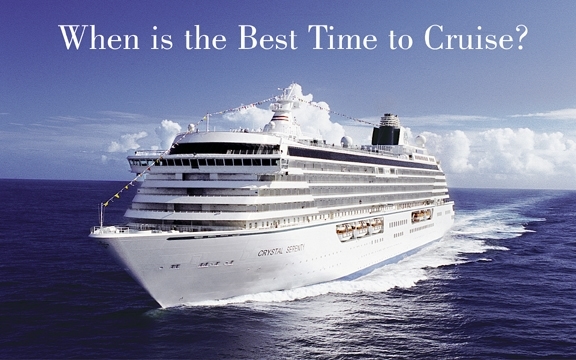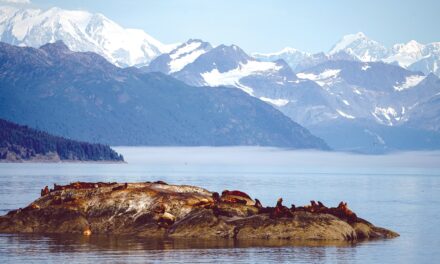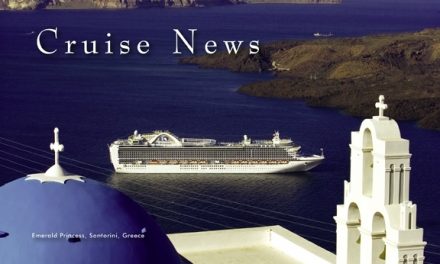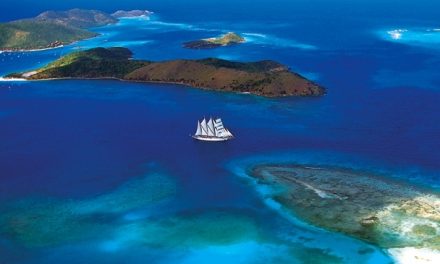When is the Best Time to Cruise?
Article from www.cruisecritic.com
Photo Courtesy Crystal cruises
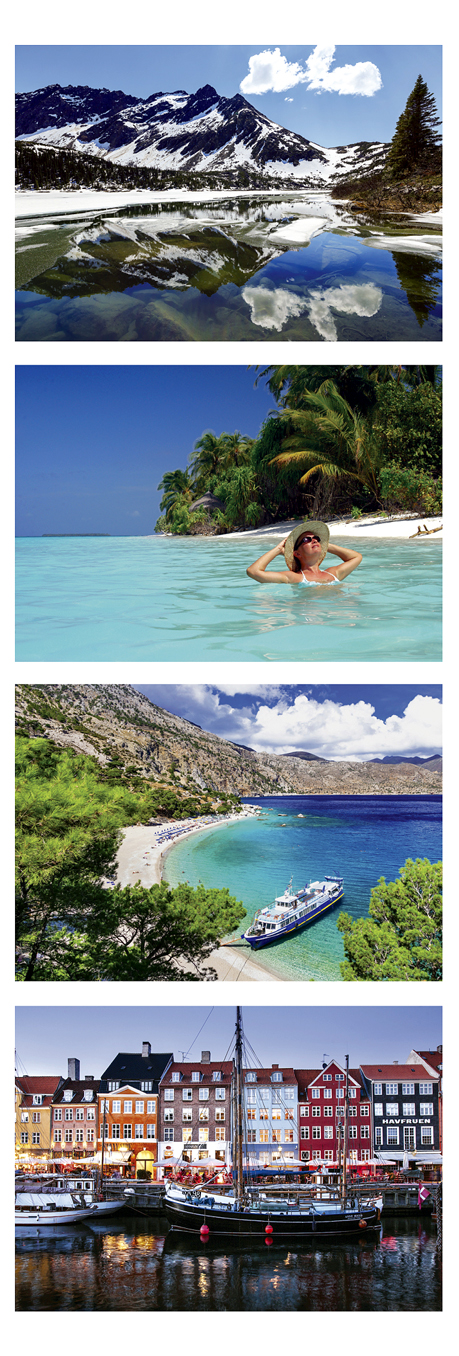
It’s one of the most common cruising questions: When is the best time to cruise Alaska (or the Caribbean, Canada/New England, Hawaii or Europe)?
The answer depends on many variables. Fall foliage enthusiasts, for instance, will find September and October the best time to take that Canada/New England cruise, whereas water sports-lovers (and families) much prefer to sail the region in the summer when school is out and temperatures are warm for swimming. The best time to cruise to Alaska will vary depending on your preferences for viewing wildlife, fishing, bargain-shopping, sunshine, warm weather and catching the northern lights.
The first step is to consider the factors that influence your timing. Do you need to schedule around school breaks — or want to avoid kids? Is a holiday week the best time for your cruise? Is your main goal to escape frigid temperatures at home? Or maybe you have lots of flexibility (or a tight budget) and don’t mind making a few trade-offs in timing for a steal on a cabin. Your answers will influence which sailing season is your best bet.
For most cruise regions, there are periods of peak demand (high season), moderate demand (shoulder season) and low demand (low season). Not so long ago, high season tended to be when the weather was best in a particular area (and when all the Northerners flocked to the sun). But as more and more families take to cruising, the summer months have become a peak-demand period, regardless of the weather (at home or in the region). Families especially need to book high-season sailings as early as possible because some cruise lines limit the total number of children per sailing, and each ship has a limited number of cabins that can accommodate three or more people.
Slow and shoulder seasons yield the most bargain opportunities in year-round destinations. In places like Alaska and Bermuda, where you have a five- or six-month sailing season, the off-season is a few weeks after cruises begin and before they end. For regions like the Panama Canal and Northern Europe, almost all sailings are priced “in season.”
The following is a partial list of cruising regions and the best time to cruise them.
Alaska
High Season: June through August
Quirks & Perks of Sailing in Season: Temperatures are at their warmest (highs: 50s to 70s Fahrenheit), plus the further into the summer you are, the better your chances of seeing wildlife on the various expeditions. The downside: Demand is so strong, you need to book months (better yet, a year) in advance to get the best land and tour packages. Keep in mind, with so many ships sailing Alaska now, there can be a tremendous amount of congestion in small-town ports. To minimize joining the masses, select a ship that sails during the week. For a pricing advantage, northbound glacier routes tend to be cheaper than southbound.
Low Season: May and September
Quirks & Perks of Sailing in the Off Season: Shoulder-season perks include smaller crowds and cheaper prices as a result of the weather gamble (highs: 50s to 60s) and the possibility of snow. May sailings typically encounter less rain than summer cruises, and the scenery is arguably more beautiful with more snow-capped mountains; September cruisers benefit from end-of-season souvenir bargains and a possibility of catching the northern lights. A few caveats: Shore excursions have a greater chance of being canceled than in high season, especially boat and helicopter tours. In addition, Denali National Park has been known to close in September due to snow.
Caribbean
High Season: Late June through August; Christmas and New Year’s weeks; February to mid-April
Quirks & Perks of Sailing in Season: The two main groups of cruisers sailing in the peak season are families off from school and Northerners seeking a respite from the cold. School holidays are a great time to sail with kids — children’s programs are in full swing and they’re available even on lines that don’t normally cater to kids. Plus, it’s easy for children to make friends onboard.
Keep in mind that prices are higher, especially when you add winter flight delays that can be time-consuming and costly (though four-season cruising to the Caribbean from multiple homeports in the Northeast, Southeast and Gulf Coast means residents of those areas can save money by driving to their departure ports). Plus, the summer cruise season coincides with hurricane season, though the storms don’t start to peak, usually, until mid-August.
During spring break, when thousands of people are flocking to Florida resorts and cruise ports, you will have to think about booking your airline tickets almost farther out than your cruise; prices can be high. People looking for peace and quiet away from kids will want to avoid break weeks like the plague, as ships are at their highest capacity, which means crowded ports and mega-ships run amuck with rowdy kids and teens.
Low Season: Late April through May; September to early January (excluding holiday weeks)
Quirks & Perks of Sailing in the Off Season: The biggest benefits are the great weather and smaller crowds, usually at hundreds less per person than you’d pay at peak times. The fall especially is a great time for last minute availability and bargains. Hurricane season (June through November) still poses a threat; if a storm is brewing somewhere in Florida or the Caribbean, it can mean a change in ports of call and a challenge getting to ports of embarkation as the ship alters course to avoid the storm. Even if your cruise isn’t impacted, you can still experience rain and rough seas.
Europe River Cruises
High Season: April to October
Quirks & Perks of Sailing in Season: A flotilla of specially designed river ships and cruise barges offers a unique and port-intensive experience for travelers who want to see more of Europe’s heartland, especially in spring and fall. Spring can mean flowers in glorious bloom (favorites are the spring Tulip Time cruises though the Netherlands and Belgium), but also keep in mind that heavy rains and early-spring flooding can make the rivers swell and the locks impassable. Conversely, summer temperatures can cause the rivers to dry up, making it impossible for boats to move. If these weather events happen, you’ll be taken to the sights by motorcoach. While some cruises will tailor port itineraries to families, don’t expect to see as many — if any — kids there as you do on the bigger ships, even during the summer.
Low Season: March; Late November and December
Quirks & Perks of Sailing in the Off Season: Most European river and canal ships operate seasonally and shut down in January and February. When operating, however, the cruise itineraries are not weather dependent, so a March sailing means you get to enjoy the castles, cathedrals and quaint shops without the summer crowds. Many river lines also offer Christmas market cruises in November and December to Germany, Austria and Eastern Europe. The weather can be bitterly cold, but for shoppers and Christmas-lovers it’s a unique way to experience the charming seasonal markets along the riverside.
Mediterranean
High Season: May to September
Quirks & Perks of Sailing in Season: Both European and American families flock to many of the summer sailing dates (especially in August), making for a nice cultural mix of passengers and plenty of onboard, kid-friendly activities. The tradeoffs are bigger crowds, higher prices (both cruises and airfares) and steamy temperatures that may sap your sightseeing energy. You may find restaurants and other establishments closed in August, which is when much of Europe goes on holiday. September is an increasingly popular time to cruise the Western Mediterranean because you can avoid the school kids and still enjoy warm temperatures.
Low/Shoulder Season: October through April
Quirks & Perks of Sailing in the Off Season: Early-spring and late-fall sailings offer the advantage of more competitive fares and fewer crowds in port. Plus, the weather is often mild (though March and November can be rainy). A very few ships actually remain in the region year-round; look for lower fares and cruises to the warmer regions of the Mediterranean, such as Spain, Morocco and the Canary Islands.
Northern Europe
High Season: June through August
Quirks & Perks of Sailing in Season: Northern Europe is at its loveliest during the summer months, with ports that line the Baltic Sea and Norway’s fjords. Temperatures are balmy (even occasionally steamy), skies are generally sunny, and the cities turn themselves inside out — life is lived out of doors, whether it’s getting out on the water or sipping beers at sidewalk cafes. On the flipside, summer cruises to the Baltic are often among the most expensive Europe cruises out there.
Low/Shoulder Season: May and September
Quirks & Perks of Sailing in the Off Season: Kids are back in school, ports are less frenetic, and the weather — and foliage (whether spring-like or autumnal) — can be lovely in late spring and fall. Temperatures might be a bit more brisk at those times, but you’ll avoid summer crowds, and cruise fares tend to be lower.
www.cruisecritic.com
Click on cover to view published article

